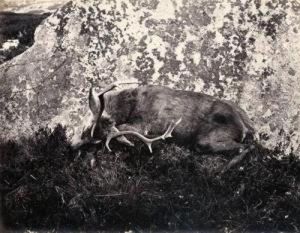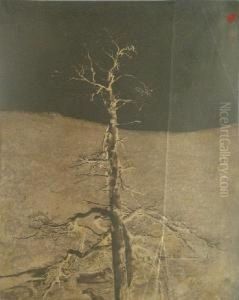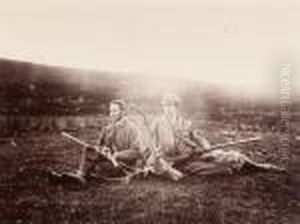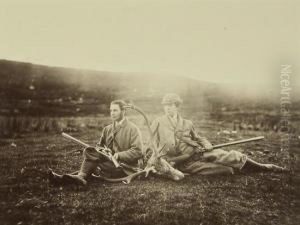Horatio Ross Paintings
Horatio Ross was a prominent Scottish sportsman and a pioneer in the field of photography, known not only for his achievements in sports but also for his contributions to the early development of photography. Born on September 5, 1801, in Rossie Castle, near Montrose, Angus, Scotland, he was the son of Hercules Ross, a successful merchant and a hero of the Napoleonic Wars. His privileged background provided him with the opportunities to pursue a variety of interests.
Ross excelled in sports, particularly in shooting and horse racing. He was recognized as one of the best shots in the British Isles and won numerous competitions. His reputation as a marksman was so significant that it is said he was once challenged to a shooting match by the Russian Tsar. In addition to his shooting prowess, he was an avid horseman and established himself as a notable figure in the horse racing community.
In the 1840s, Ross became interested in the emerging field of photography, attracted by the technological and artistic challenges it presented. He was an early adopter of the calotype process, which was invented by fellow Scot William Henry Fox Talbot. This process was an early photographic technique that allowed for multiple prints to be made from a single negative. Ross's enthusiasm and experimentation with the calotype process led him to become one of the first photographers to capture the Scottish landscape and the daily life of its people.
Ross's contributions to photography included not only his own work but also his encouragement of others in the field. He was a founding member of the Photographic Society of Scotland, established in 1856, and his works were exhibited widely, gaining recognition for their composition and technical proficiency.
Throughout his life, Ross continued to balance his passion for sports and photography. He passed away on December 6, 1886, leaving behind a legacy as a sportsman and as one of Scotland's early photographic pioneers. His photography, which provides a valuable historical record of 19th-century Scotland, is held in various collections, including those of the National Galleries of Scotland and the Scottish National Portrait Gallery.



